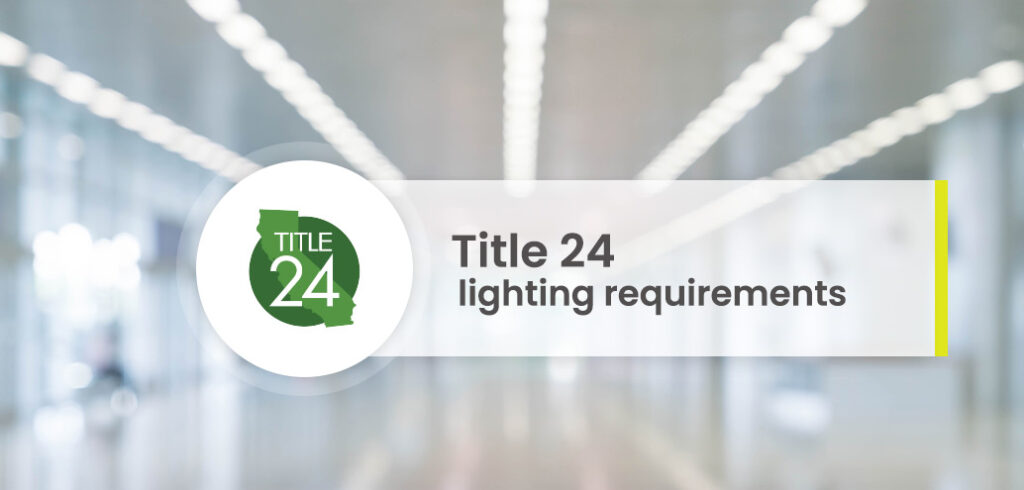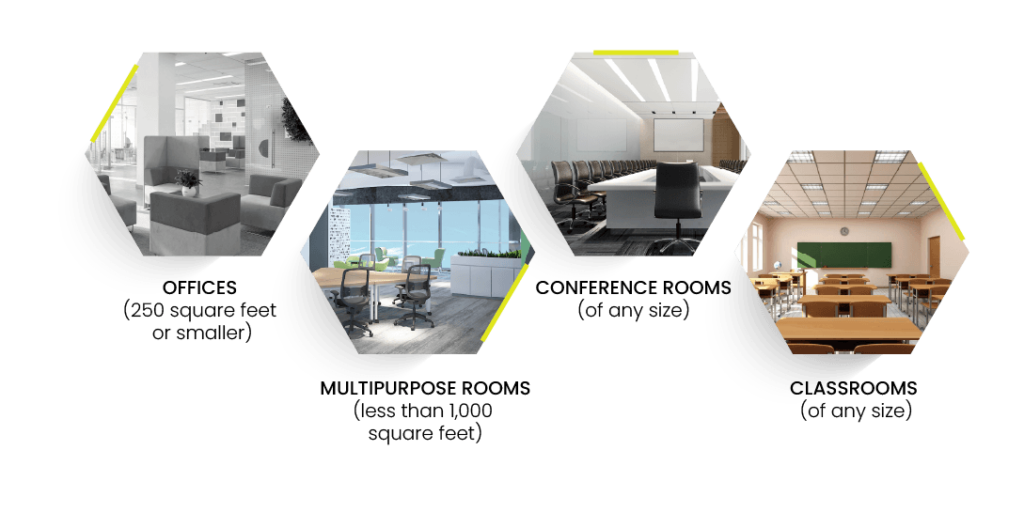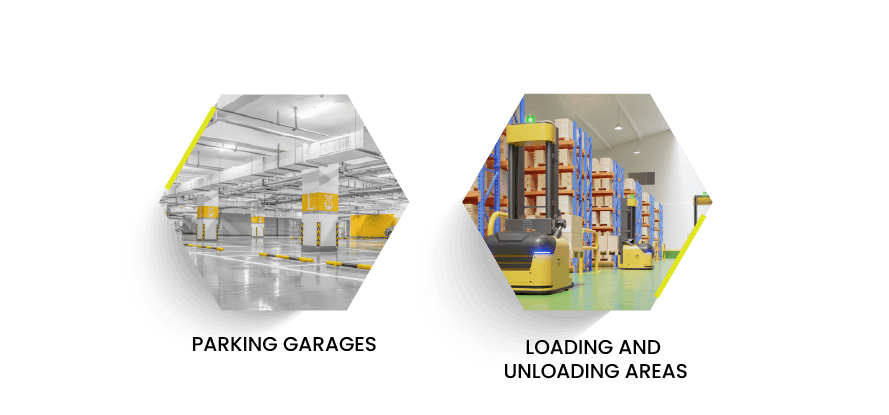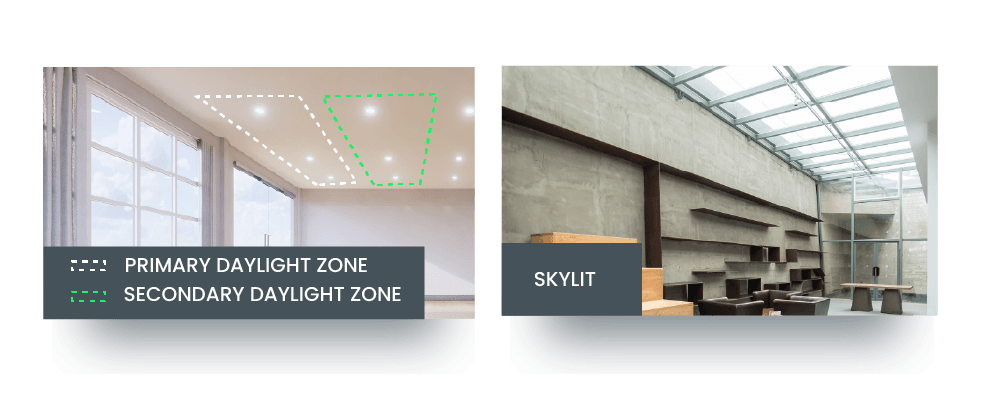Title 24 lighting requirements: All you need to know!

Title 24, also known as California Building Standards Code, paves the way for improved energy performance in today’s buildings. It puts forth a regulatory framework for commercial and residential buildings (both new construction and renovation) with the aim of reducing energy consumption, improving occupants’ comfort, and a greener future. If you are a builder, architect, designer, contractor, landlord, or building owner, understanding Title 24 is vital. This article lets you understand all the important lighting control requirements imposed by Title 24, so you can carry on your project with confidence.
Read on to learn:
Manual Space Controls
There shall be independent manual controls for Luminaires in each area enclosed by walls or floor-to-ceiling partitions.
Controls must be readily accessible and located where occupants can see the controlled lighting. General, floor, wall, window, display, ornamental and special effects lighting must be separately controlled.
The following areas can be excluded from manual area controls:
- Public restrooms having two or more stalls
- Parking areas
- Stairways and corridors that are not accessible to unauthorized personnel
- Malls
- Auditorium
- Retail sales areas
- Wholesale showrooms
- Commercial and industrial storage areas
- Commercial and industrial work areas
- Convention centers
- Psychiatric or secure areas of health care facilities
Automatic Shutoff
Title 24 requires an automatic control device to reduce or turn off the lighting when a space is vacant or unoccupied. Shut-off control device may be a time clock, occupancy sensor or any other device that can turn off light automatically.
Time switch lighting controls allow scheduling of lighting system where the ON and OFF functions are determined by the time of the day. For instance, it can be programmed to automatically turn lighting ON before the people arrive for work and automatically turn lighting OFF when they leave work.
Time clock must have:
- A holiday shut-off feature which turns off the lights during a holiday
- Manual ON/OFF controls available to occupants
- Separate shut-off controls on areas less than 5,000 square feet or less than 20,000 square feet for auditoriums, malls, single-tenant retail spaces, industrial facilities, convention centers, and arenas
Occupancy sensors automatically turn the light ON when motion is detected and turn the lights OFF when movement is no longer detected. It includes motion, occupant, vacancy, partial-ON, and partial-OFF sensors.
Occupancy sensors must be required to shut off lighting in specific areas like

Partial-off occupancy sensing strategy may be used in some areas like

Lighting should be reduced by at-least half during the vacancy period.
Motion sensors are used for occupancy sensing. Read more about different motion sensors here.
Light Level Control
Multi-level lighting controls provide building occupants with the ability to use all of the lights, part of the lights and none of the lights in a space. They’re usually used to control dimmable light sources, but they can also be used to regulate groups of non-dimmable lights to achieve different light levels in an area.
If your space is greater than 100 square feet and your lighting utilizes more than 0.5 watts per square foot of general lighting, Title 24 requires you to adopt multilevel lighting controls.
- LED luminaires and light fixtures must be continuously dimmable in a range of 10-100%.
- CFL lamps must have continuous dimming from 20% to 100% power.
- Enclosed spaces must have controls that reduce the lighting by 30-70% of the full lighting load
- Linear and U-bent fluorescent lighting fixtures must have one step in each of the following ranges: 20% to 40%, 50% to 70%, 75% to 100% and 100% power.
A few exemptions to this include the following:
- Areas with a single luminaire with no more than 2 lamps
- Aisle ways and open areas in warehouses
- Library book stack aisles
- Corridors and stairwells
- Parking garages, parking areas, loading/unloading areas
Daylighting and Controls
Automatically adjust the power of a specific area as the intensity of the incoming daylight changes. This involves the strategic placement of windows and other openings to allow more natural light during the daytime.
There are three types of daylighting zones:

• Skylit – An area illuminated by one or more skylights
• Primary sidelit – A daylit area directly adjacent to one or more windows
• Secondary sidelit – A distant area (not directly adjacent to a window) that still receives some daylight from the window
A few exemptions to this rule include:
- Glazing in room is <24 ft2
- Primary/Skylight lighting <120W
- Glazing with overhang above may be exempt
- Sidelight zones in retail merchandise/wholesale showrooms.
Want to know more about daylight harvesting? Download your free guide here.
Additional Controls
Title 24 additional controls include demand response control and receptacle controls.
Demand response control
Lighting controls have to temporarily reduced according to the electricity cost or signals from an electric utility.
- In response to a Demand Response Signal, lighting power in buildings greater than 10,000 square feet shall be automatically lowered. The total lighting power of the building shall be reduced by at least 15% of the total installed wattage.
- Non-habitable spaces are excluded from meeting this criteria and spaces having a lighting power density of less than 0.5 watts per sq ft are not to be counted against the total lighting power of the building.
OpenADR is the fastest growing open standard communication protocol that helps automate demand response. Lumos Controls is now OpenADR compliant. Read the news here.
Receptacle controls
In all buildings, uncontrolled and controlled 120V receptacles must be provided in applicable areas (e.g., office areas, lobbies, conference rooms, kitchen areas in office spaces, and copy rooms) and meet specific requirements.
- An auto-OFF control shall be installed for controlled receptacles when the space is vacant as well as an override control to keep the lights ON no more than 2 hours and also a holiday 24-hour shut-OFF control
- At least one controlled receptacle must be installed at each work station for open office with modular furniture
To know the recent updates on Title 24 which takes effect from Jan 1 2023, click here
Long Term Energy and Cost Savings
In today’s lighting design practice, occupant comfort, health, and wellness are as important as energy efficiency. Title 24 lighting requirements are all about making commercial and residential buildings energy-efficient, cost-effective and eco-friendly.
That’s not all! When you upgrade to Title 24 code compliance, you can avail applicable rebates while saving on your monthly bill. The benefits from Title 24 energy code are expected to expand significantly in the coming years.
Want to learn more about Title 24? Download your free guide to Title 24 here.
Please comment your thoughts and feel free to contact us!